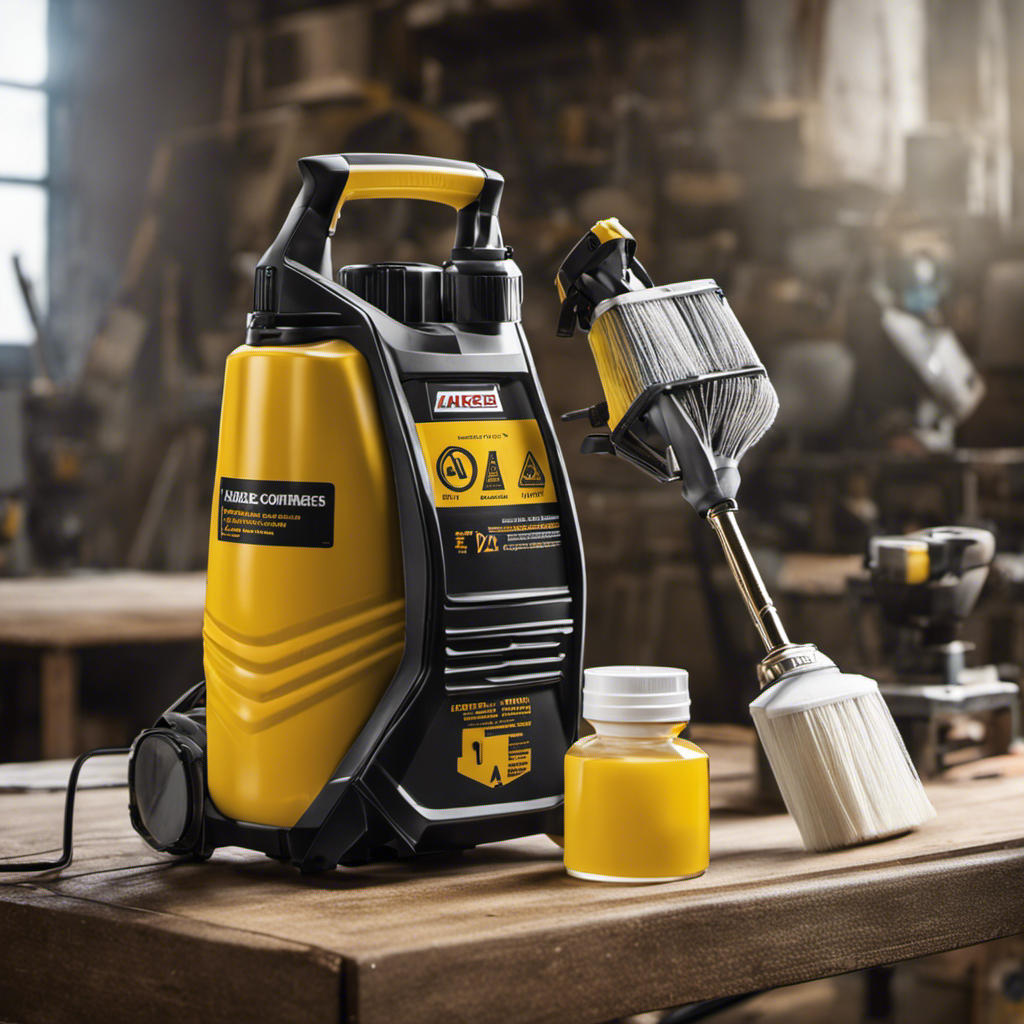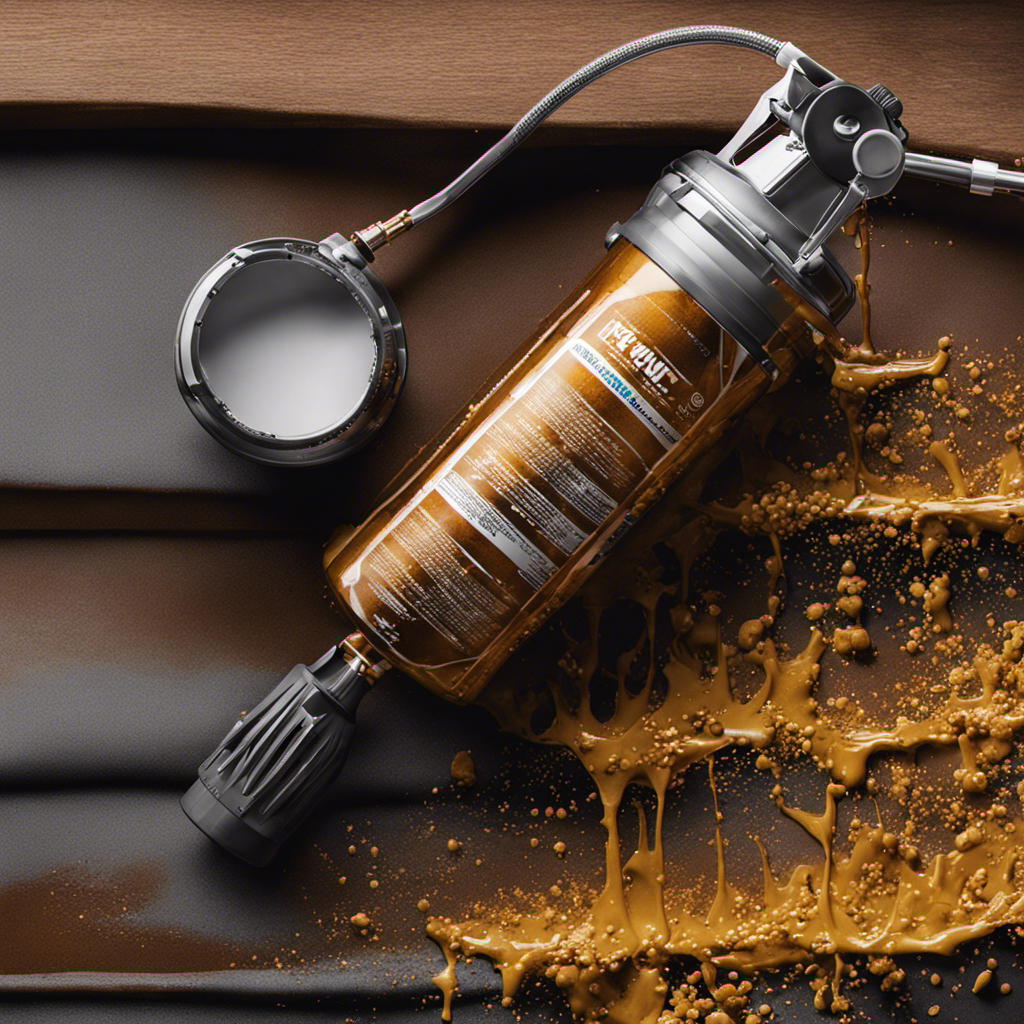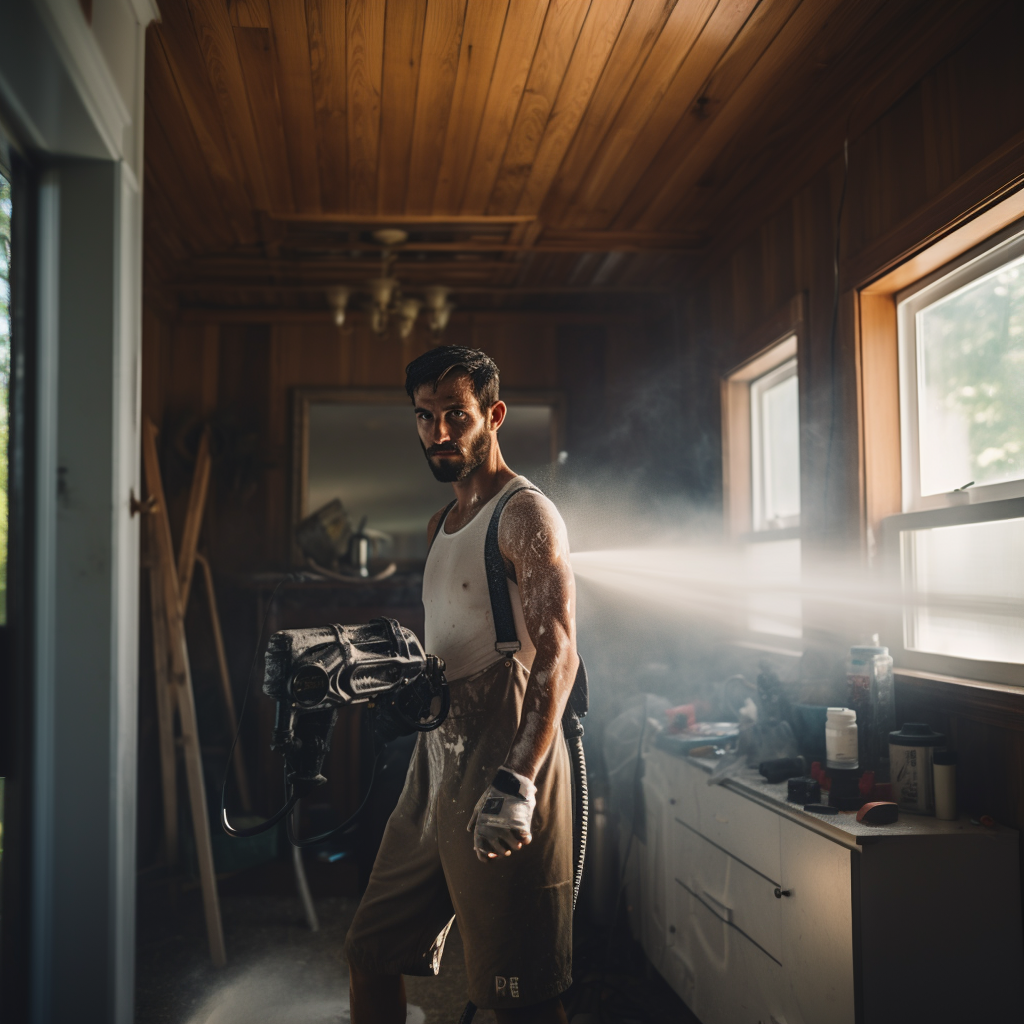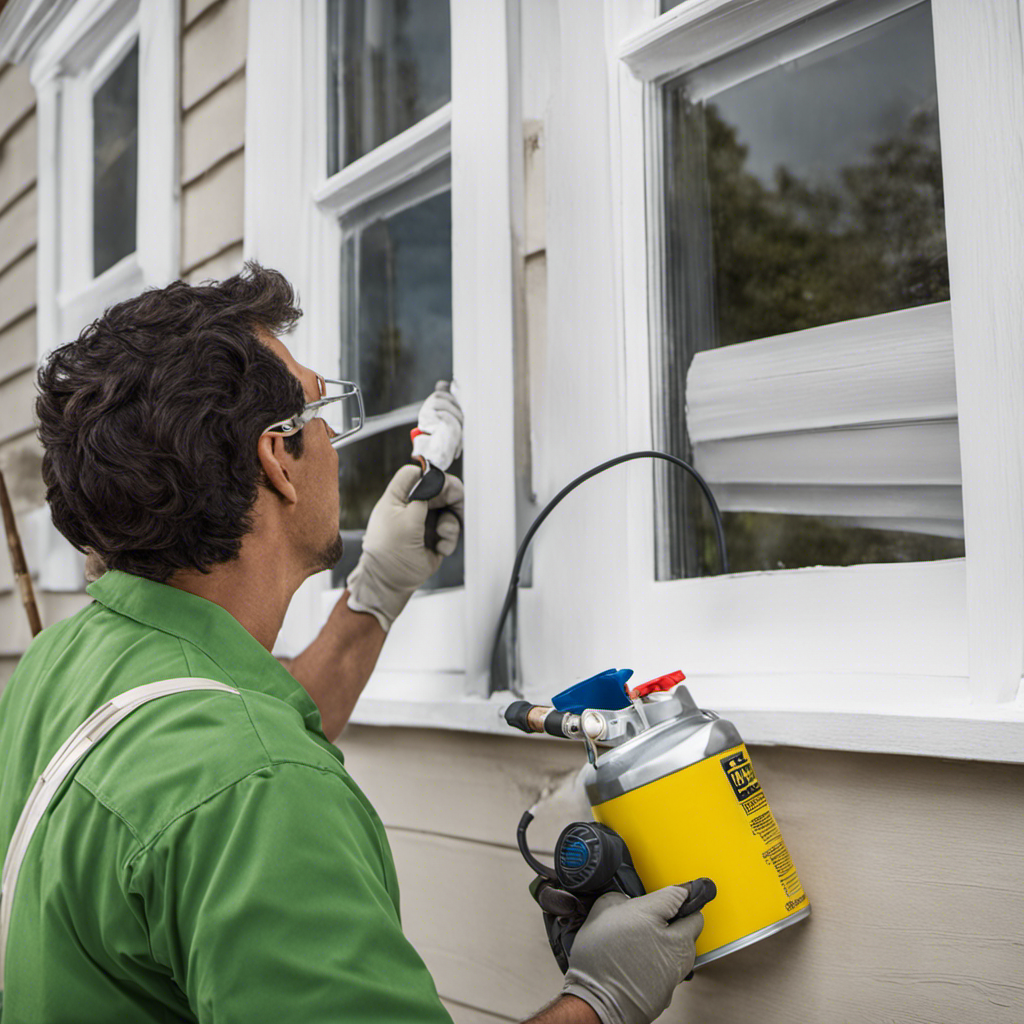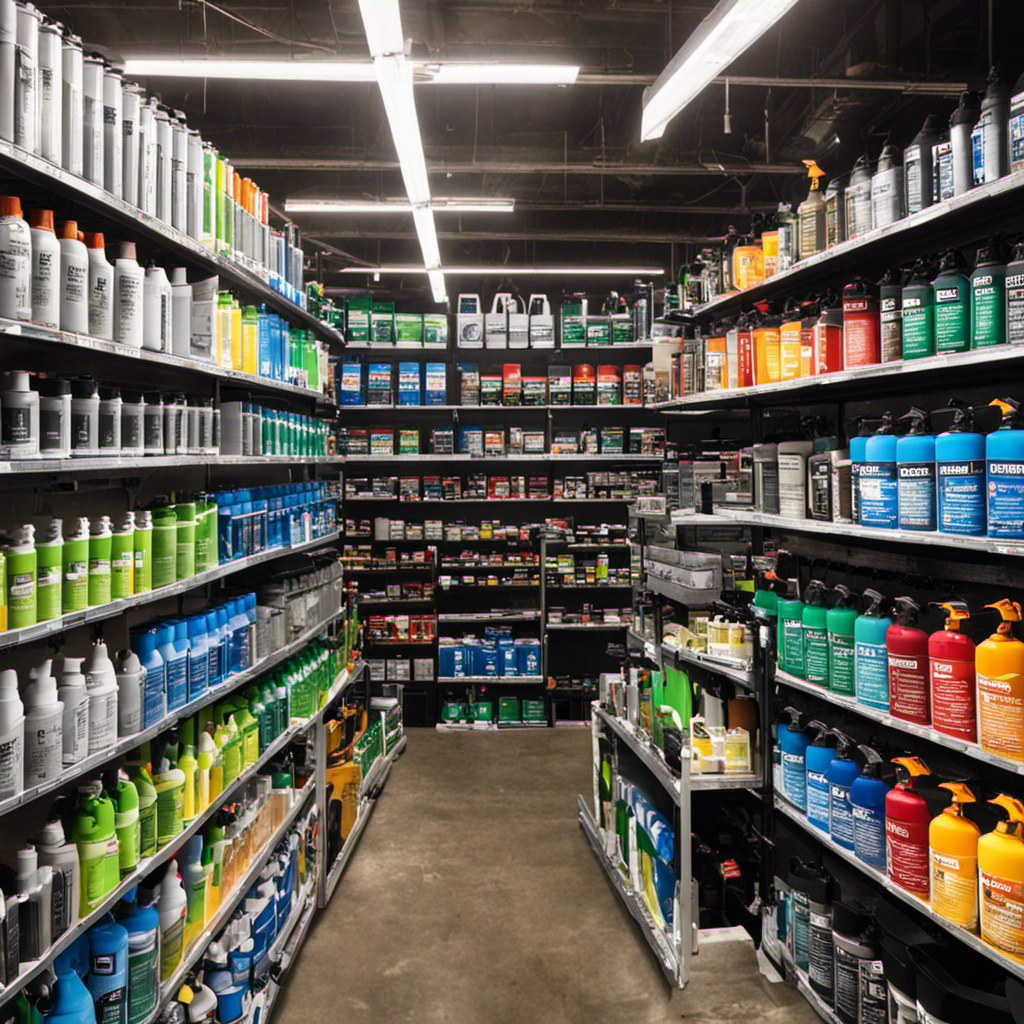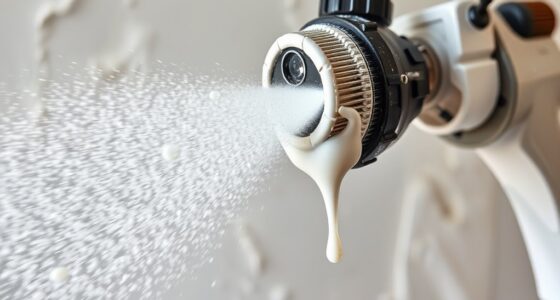When using an airless sprayer with oil-based paint, it is important to be mindful of its limited effectiveness. Improper storage can result in blockages, uneven spray patterns, and inadequate coverage. Prolonged exposure to oil-based paint can release harmful fumes, which can be detrimental to one’s health.
To ensure the longevity of the paint, it is crucial to follow best practices and safety tips. This article explores the properties of oil-based paint, the importance of proper storage and handling, factors affecting drying time, risks of leaving paint in the sprayer, health hazards, and safety precautions for working with oil-based paint.
Key Takeaways
- Oil-based paint has a slow drying time and is resistant to moisture, making it suitable for high-humidity environments.
- Factors such as temperature and length of time in the sprayer can affect the shelf life of oil-based paint.
- Leaving oil-based paint in the sprayer for too long can lead to clogging, health hazards, and compromised paint quality.
- It is recommended to not leave oil-based paint in the sprayer for more than 24 hours and to properly clean and store the sprayer after each use.
Understanding the Properties of Oil-Based Paint
Oil-based paint is known for its durability and excellent coverage, making it a popular choice for various painting projects.
Understanding paint application techniques is crucial when working with oil-based paint to prevent paint waste and overspray. Unlike water-based paints, oil-based paint has a slow drying time, which allows for smoother application and better blending. This property also makes it resistant to moisture, making it suitable for high-humidity environments or surfaces prone to moisture damage.
To prevent paint waste and overspray, it is important to apply oil-based paint in thin, even coats, using the appropriate tools such as brushes or rollers. Additionally, taking proper precautions such as covering surrounding areas and using masking tape can help minimize overspray and ensure efficient paint application.
The Importance of Proper Storage and Handling
Proper storage and handling are crucial for maintaining the quality and effectiveness of oil-based paint in an airless sprayer. The importance of regular maintenance cannot be overstated when it comes to preventing paint waste.
When oil-based paint is left in the sprayer for too long, it can dry out, harden, and clog the nozzle, leading to uneven spray patterns and poor coverage. Additionally, the paint can separate and settle, compromising its overall quality.
To prevent these issues, it is recommended to not leave oil-based paint in the sprayer for more than 24 hours. After this time, the sprayer should be cleaned thoroughly to remove any remaining paint.
Proper cleaning and storage techniques, such as using airtight containers and storing the paint in a cool, dry place, are essential for maintaining the sprayer’s longevity and performance.
Factors Affecting the Drying Time of Oil-Based Paint
Humidity and temperature are key factors that influence how quickly oil-based paint dries. The drying time of oil-based paint can be affected by various factors, including humidity and temperature.
High humidity can slow down the drying process, causing the paint to take longer to dry. In such conditions, it is recommended to use dehumidifiers or air conditioning to create an optimal environment for faster drying.
On the other hand, higher temperatures can accelerate the drying time of oil-based paint, while lower temperatures can slow it down. It is important to ensure that the temperature is within the recommended range for optimal drying.
In addition to humidity and temperature, application techniques also play a role in the drying time of oil-based paint. Proper blending and application techniques can help promote faster drying and prevent uneven drying or streaks. Brushing or rolling the paint in thin, even coats is recommended for better results.
Risks of Leaving Oil-Based Paint in the Sprayer
Leaving the paint in the sprayer for an extended period can result in clogging and poor coverage. It is important to be aware of the risks of prolonged exposure to oil-based paint and the health hazards of fumes.
Stagnant paint can lead to blockages in the sprayer nozzle, causing uneven spray patterns and compromised results. Additionally, oil-based paint contains harmful chemicals that can emit fumes when exposed for too long. Breathing in these fumes can pose serious health risks, including respiratory irritation and long-term damage.
To prevent these risks, it is recommended to not leave oil-based paint in the sprayer for more than 24 hours. Thoroughly clean the sprayer after each use and store the paint in a cool, dry place to maintain its quality and prevent health hazards.
Health Hazards of Exposed Oil-Based Paint
Exposure to fumes emitted by oil-based paint can pose serious health risks, including respiratory irritation and long-term damage.
-
Inhalation of these fumes can lead to immediate symptoms such as coughing, wheezing, and shortness of breath. Prolonged exposure may result in chronic respiratory conditions or even lung cancer.
-
The chemicals present in oil-based paint, such as volatile organic compounds (VOCs), can also cause eye and skin irritation upon contact.
-
Individuals with pre-existing respiratory conditions, such as asthma or allergies, are especially susceptible to the harmful effects of these fumes.
To minimize the health risks associated with oil-based paint:
-
Ensure proper ventilation by opening windows or using fans when working with the paint.
-
Wear protective gear, such as gloves and a respirator, to prevent direct contact and inhalation of fumes.
-
Clean up any spills promptly and dispose of paint containers properly.
How Extended Storage Can Compromise Paint Quality
Extended storage of oil-based paint can lead to a deterioration in its quality over time. The effects of extended storage can result in paint quality degradation, compromising the overall performance and appearance of the paint.
When oil-based paint is stored for long periods, it can begin to separate, settle, and thicken, making it difficult to achieve a smooth and even application. Additionally, exposure to air and moisture during extended storage can cause the paint to oxidize, resulting in a change in color and texture.
To prevent these issues, it is essential to store oil-based paint in a cool, dry place and seal the container tightly to minimize air exposure. Regularly inspect the paint for any signs of contamination or thickening, and dispose of the paint if any changes are noticed.
Recommended Maximum Duration for Paint in the Sprayer
Proper maintenance and timely cleaning are crucial for maintaining the efficiency and longevity of oil-based paint in the sprayer. To ensure optimal performance, follow these recommended cleaning techniques and be aware of the effects of temperature on paint drying time.
-
Clean the sprayer thoroughly after each use using a solvent recommended by the paint manufacturer. This removes any residual paint and prevents clogging or contamination.
-
Store the paint in a cool, dry place to maintain its quality. Extreme temperatures can affect the drying time of the paint, so it’s important to keep it in a climate-controlled environment.
-
Avoid leaving oil-based paint in the sprayer for more than 24 hours. Leaving paint in the sprayer for extended periods can lead to drying out, hardening, and reduced efficiency.
Best Practices for Cleaning the Airless Sprayer
After discussing the recommended maximum duration for leaving paint in the sprayer, the focus now shifts to the best practices for cleaning the airless sprayer.
Proper maintenance and cleaning are crucial to ensuring the longevity and performance of the equipment. Neglecting this aspect can lead to common sprayer maintenance issues such as clogging, poor spray patterns, and reduced efficiency.
The best cleaning techniques involve using a solvent recommended by the paint manufacturer to thoroughly clean the sprayer after each use. This helps remove any leftover paint and prevent potential damage.
Additionally, it is important to check for signs of contamination or thickening periodically. If any changes are noticed, the paint should be disposed of properly.
Choosing the Right Containers for Paint Storage
Choosing the right containers for paint storage is essential to maintain its quality and prevent air exposure and oxidation. When selecting containers for paint storage, consider the following:
- Material: Opt for metal or glass containers, as they provide better protection against air exposure and oxidation compared to plastic containers.
- Airtight lids: Ensure that the containers have airtight lids to create a seal and prevent air from entering the container.
- Size: Use containers that are appropriate for the amount of paint you need to store. Avoid using oversized containers, as they can lead to excess air exposure.
Proper ventilation in the workspace is also crucial when storing paint. Make sure the area has adequate airflow to prevent the accumulation of fumes. This can be achieved by opening windows or using exhaust fans.
Taking these measures will help preserve the quality of the paint and create a safe working environment.
Maintaining a Cool and Dry Environment for Paint
Maintaining a cool and dry environment is crucial for preserving the quality of the paint in storage. Temperature control is essential to prevent the paint from deteriorating and maintaining its optimal consistency. Extreme heat or cold can cause the paint to thicken or separate, leading to clogs and poor spray patterns.
Additionally, moisture buildup can affect the paint’s adhesion and result in mold or mildew growth. To prevent these issues, store the paint in a climate-controlled area with a temperature range of 50-77°F (10-25°C). Avoid storing paint in areas with high humidity or where condensation can occur.
This can be achieved by using dehumidifiers or moisture-absorbing materials in the storage space. Regularly inspect the area for any signs of moisture and address them promptly to maintain the paint’s integrity.
Signs of Contamination or Thickening in Oil-Based Paint
Contamination or thickening in oil-based paint can be identified by changes in texture, such as clumps or lumps, and the presence of foreign particles. To prevent contamination and ensure the quality of your paint, it is important to be able to identify these signs. Here are three key signs to look out for:
-
Clumps or Lumps: If you notice any clumps or lumps in the paint, it may indicate contamination or thickening. These abnormalities can affect the smoothness of the paint application and result in an uneven finish.
-
Foreign Particles: The presence of foreign particles, such as dust, hair, or debris, in the paint can also indicate contamination. These particles can affect the overall quality of the paint and result in imperfections on the painted surface.
-
Changes in Texture: Any noticeable changes in the texture of the paint, such as it becoming thicker or more viscous, can be a sign of contamination or thickening. This can make the paint difficult to work with and result in poor coverage.
Safety Precautions for Working With Oil-Based Paint
Wearing appropriate protective gear is crucial when working with oil-based paint to minimize potential health risks. When handling oil-based paint, it is essential to wear gloves, goggles, and a respirator to protect against skin and eye contact, as well as inhalation of harmful fumes.
Additionally, proper disposal methods should be followed to ensure safety. When disposing of oil-based paint, it is important to check local regulations as they may vary. Often, oil-based paint is considered hazardous waste and should not be poured down drains or disposed of in regular trash. Instead, it should be taken to designated collection sites or hazardous waste facilities.
Proper Ventilation in the Workspace
Proper ventilation is essential in the workspace to ensure adequate airflow and minimize the inhalation of harmful fumes when working with oil-based paint. To maintain workspace safety, consider the following:
- Install an exhaust system or use fans to remove fumes and provide fresh air circulation.
- Open windows and doors to create cross ventilation and allow for the dispersal of fumes.
- Use respiratory protective equipment, such as masks or respirators, to filter out harmful particles.
- Regularly inspect and maintain ventilation systems to ensure they are functioning properly.
- Follow safety guidelines and regulations set by your local authorities to ensure proper ventilation standards are met.
- Educate employees and workers about the importance of proper ventilation and provide training on the correct use of protective equipment.
Sealing the Paint Can to Prevent Air Exposure
To prevent air exposure and maintain the quality of the paint, it is important to tightly seal the can after each use. Proper sealing techniques can significantly extend the shelf life of oil-based paint in an airless sprayer. Here are some alternative storage methods that can help preserve the paint for future use:
| Sealing Technique | Description | Benefits |
|---|---|---|
| Plastic Wrap | Wrap the opening of the paint can with plastic wrap before securing the lid. | Creates an airtight seal, preventing air from entering the can. |
| Rubber Band | Place a rubber band around the lid to provide additional sealing. | Enhances the tightness of the seal, reducing air exposure. |
| Vacuum Sealer | Use a vacuum sealer to remove excess air from the paint can before sealing. | Minimizes air contact, preventing oxidation and drying out. |
Immediate Cleaning of the Airless Sprayer to Prevent Clogging
Regularly cleaning the airless sprayer is vital to prevent clogging and maintain its optimal performance. Immediate cleaning after each use is essential to prevent the buildup of dried paint particles and residue that can lead to clogging. To ensure effective cleaning, follow these best practices:
- Use a solvent recommended by the paint manufacturer to break down and remove any paint residue.
- Disassemble the sprayer according to the manufacturer’s instructions to access all the components that may have come into contact with paint.
- Clean each component thoroughly using a brush or cloth soaked in the solvent, paying close attention to areas prone to clogging, such as the nozzle and filters.
- Rinse all the components with water to remove any remaining solvent and paint residue.
Frequently Asked Questions
Can Oil-Based Paint Be Stored in Plastic Containers?
Oil-based paint should not be stored in plastic containers. It is recommended to store oil-based paint in glass containers to prevent air exposure and oxidation. Plastic containers may not provide a sufficient barrier against air, leading to paint degradation and reduced quality.
Additionally, the impact of temperature on oil-based paint storage should be considered. Extreme heat or cold can cause the paint to thicken or separate, resulting in clogging or poor spray patterns. Therefore, it is crucial to store oil-based paint in a cool, dry place to maintain its integrity.
How Often Should I Check for Signs of Contamination or Thickening in Oil-Based Paint?
Checking for signs of contamination or thickening in oil-based paint is an essential step in maintaining its quality and preventing issues during application. It’s recommended to regularly inspect the paint for any changes, such as clumps, discoloration, or an off smell.
What Is the Best Way to Dispose of Oil-Based Paint?
The best way to dispose of oil-based paint is to follow proper guidelines and regulations set by your local waste management authorities. This may include taking the paint to a designated hazardous waste facility or participating in a community paint recycling program.
It is important to never dispose of oil-based paint in the regular trash or pour it down the drain, as it can harm the environment. Following best practices for storing oil-based paint and properly cleaning up spills can help minimize waste and ensure safe disposal.
Can I Use Oil-Based Paint in a Sprayer That Has Been Used for Water-Based Paint?
Using a sprayer that has been previously used for water-based paint can lead to cross contamination. The cleaning process is crucial to prevent this.
It’s important to thoroughly clean the sprayer, removing all traces of the water-based paint before using oil-based paint. Failure to do so can affect the quality and performance of the oil-based paint, resulting in uneven application and poor coverage.
Follow the manufacturer’s instructions for proper cleaning to ensure optimal results.
What Are the Potential Health Risks of Inhaling Oil-Based Paint Fumes?
Potential health risks of inhaling oil-based paint fumes include respiratory irritation and long-term damage. Proper ventilation is essential to minimize the inhalation of these fumes. Working in a well-ventilated area and wearing protective gear, such as a respirator, can help reduce the risk.
It is important to seal the paint can tightly after each use to prevent the release of fumes. Additionally, avoiding smoking or eating near the work area is recommended to maintain a safe environment.
Conclusion
In conclusion, proper storage and handling of oil-based paint in an airless sprayer are crucial for optimal performance and safety. By following best practices such as cleaning the sprayer after each use and storing the paint in airtight containers in a cool and dry place, users can extend the shelf life of the paint and prevent issues like clogging and poor coverage.
Additionally, it is important to be aware of the health hazards associated with exposed oil-based paint and to take necessary safety precautions, such as working in a well-ventilated area and wearing protective gear.
An interesting statistic to note is that leaving oil-based paint in the sprayer for too long can lead to a significant decrease in its effectiveness, with studies showing a 30% reduction in coverage and drying time after just one week of exposure.
Franz came aboard the Paint Sprayer Zone team with a background in both journalism and home renovation. His articulate writing style, combined with a passion for DIY projects, makes him an invaluable asset. Franz has a knack for breaking down technical jargon into easy-to-understand content, ensuring that even the most novice of readers can grasp the complexities of paint sprayers.
